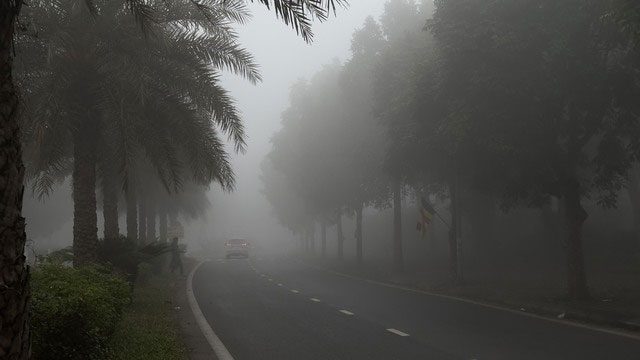On the morning of February 2nd, Hanoi was shrouded in thick fog, which not only made transportation difficult but also posed significant health risks.
According to the National Center for Hydro-Meteorological Forecasting, fog is one of more than 20 types of natural disasters commonly experienced in Vietnam. Fog occurs when water vapor condenses into tiny droplets in the layer of air close to the Earth’s surface, reducing horizontal visibility to under 1 kilometer.
The primary cause of fog formation is the difference in humidity and temperature in the air. During winter, the air temperature is low, humidity is high, and wind speed is very weak, sometimes nonexistent. These are three critical factors for fog formation.
How Does Fog Affect Health?
Associate Professor Dr. Tran Dac Phu, former Director of the Department of Preventive Medicine (Ministry of Health), stated that fog poses a risk to health. When fog is present, humidity in the air increases significantly, creating favorable conditions for the growth of bacteria and viruses.

Fog reduces visibility in Thanh Ha Urban Area at 7:30 AM on February 2. (Photo: N.M)
Especially, fog occurs around the Lunar New Year, a time when there’s a high demand for gatherings and travel, thus increasing the risk of spreading respiratory infectious diseases.
“High humidity will significantly affect individuals with joint issues, cardiovascular problems, and those with underlying health conditions… leading to acute disease episodes that require hospitalization,” Dr. Phu noted.
According to him, in addition to the risk of infectious diseases and the exacerbation of chronic conditions, fog also increases the likelihood of pollutants, dust, and harmful substances lingering in the air.
“Foggy weather traps polluted air from rising. Especially around the Lunar New Year, the high volume of traffic leads to the accumulation of toxic gases. Additionally, fine dust levels also rise… If one accidentally inhales toxic gases and fine dust, it can be hazardous to health, increasing the risk of serious respiratory, bone, and joint diseases,” Dr. Phu explained.
Protecting Health on Foggy Days
According to the expert, to mitigate the harmful effects of dense fog, the public should take timely preventive measures such as:
- Avoid going out too early in the morning, especially for children, the elderly, individuals with underlying health conditions, and pregnant women. If travel is necessary, it is advisable to wait until the fog dissipates so that airborne toxins have risen.
- When outdoors, wear medical masks to block toxic gases in the fog.
- At home, use dehumidifiers and set air conditioning to heating mode to limit the growth of bacteria and viruses that may cause illnesses.
- Avoid outdoor exercise in the morning when there is dense fog.
- Seek medical attention if experiencing respiratory symptoms to prevent worsening conditions.
- Individuals with joint issues or chronic diseases should pay attention to their health and visit a healthcare facility immediately if symptoms arise.
- Keep the body warm to ensure a stable temperature.
- Maintain personal hygiene regularly and ensure adequate nutrition intake.
- Avoid drying clothes outdoors overnight.
- Iron clothes to eliminate mold and mildew on garments.
What is fog? Why does fog occur?
The inexplicable mystery on a deserted island: The Soviet Union decoded but failed


















































